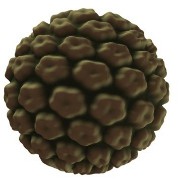Vulvar intraepithelial neoplasia (VIN), also called vulvar or vulval neoplasia, is a pre-cancer of the vulva, located in the top most layer of skin called the epidermis. It is NOT cancer, but being diagnosed with VIN means that you may be at an increased risk of developing vulvar cancer.
However, most women with VIN do not go on to develop cancer and the medical profession aren’t sure of the relationship between VIN and cancer because there has been little research into the subject.
No one knows what causes VIN, but for women in their 30s and 40s who develop it, it seems to be linked to infection with HPV. The cause of VIN in older women may be due to lichen sclerosus.
Symptoms
Some women have no symptoms but the condition may be noticed at a routine gynecological check, as changes in the skin are visible to the eye (VIN can also resemble dermatitis).
Other women can have various symptoms, including:
• Severe vulvar pain
• Severe vulvar itching
• A lump at the vulva
• Thickening skin at the vulva
• A raised skin rash around the vulva (that looks similar to warts)
• Tingling sensation of the vulva
• Painful sexual intercourse.
Diagnosis
Your doctor will examine you. He will normally be able to identify VIN just by looking but this will need to be confirmed with a biopsy. A tiny amount of tissue will be removed from the affected area and examined under a microscope to see if it is VIN or another skin condition.
You can have this procedure done with a local or general anaesthetic. It depends on your preference, your medical history and your doctor’s opinion.
How Many Women Have VIN?
It is not known how many women have VIN because quite a few women have no symptoms and so have no reason to attend a doctor. Many cases of VIN are discovered by chance at a visit to the gynecologist.
There have been more women diagnosed with VIN in recent years but it isn’t known whether this is because more women have the condition or whether doctors are just getting better at diagnosing it.
Treatment
If you have no symptoms, if you are pregnant, or if there’s a very large area of affected skin that would involve invasive treatment, you can opt just to do nothing and wait and see, with regular monitoring by your doctor. Your chance of having cancer is around 20 percent if you choose this option, so there is still more chance that you won’t get cancer.
Surgery
Surgery can be done to remove affected areas of tissue. If there is a large area that is affected, surgery can distort the vulvar anatomy and cause scarring and possible problems with sexual intercourse, so that is why some women with extensive VIN choose the wait and see option. Smaller areas can be operated on with less risk of damage to the vulva.
Laser Treatment
Laser therapy is done under general anaesthetic and the surgeon burns off the affected tissue with the laser. This has the advantage of only destroying the top layer of skin (the epidermis) and not any of the deeper layers.
The disadvantages are that many women are in a lot of pain post-operatively and require strong pain relief and time to recover. Long-term, the treatment seems to be ineffective as the numbers of women getting VIN again are high.
Imiquimod Cream
Apart from the wait and see option, this is the least invasive treatment. Imiquimod cream releases cytokines that encourage the immune system to attack the VIN.
Because the immune system attacks the abnormal cells, this has a higher chance of eliminating them. With surgery and laser treatment, there is a reasonable chance that some of the affected cells will be left behind.
There is also no chance of disfigurement of the genitals and no post-operative pain or problems with sexual intercourse when opting for the cream instead of surgery or laser treatment.
It is a fairly new treatment and has only been studied on a small number of patients (VIN is a rare condition), but the results from a study in the Netherlands look promising. Of 52 patients in that trial, 26 were given imiquimod and the remaining patients were given the placebo.
Lesion sizes were reduced by more than 25 percent in 81percent of treated patients after 20 weeks. In patients shown to have HPV infection, the cream cleared the infection in 58 percent of cases.
Nine of the treated patients had complete recovery after 20 weeks and were still clear of VIN a year later, so the researchers concluded the cream was an effective treatment for VIN.
Sources:
Vulval Neoplasia, Patient UK. Web. 6 March 2012. http://www.patient.co.uk/doctor/Vulva-Neoplasia.htm
Vulval Intraepithelial Neoplasia, Vulval Pain Society. Web. 6 March 2012. http://www.vulvalpainsociety.org/vps/index.php/vulval-conditions/vulval-intraepithelial-neopasia
Treatment of vulvar intraepithelial neoplasia with topical imiquimod, N Engl J Med. 2008 Apr 3;358(14):1465-73. Abstract: http://www.ncbi.nlm.nih.gov/pubmed/18385498
Reviewed March 6, 2012
by MIchele Blacksberg RN
Edited by Jody Smith




Add a CommentComments
There are no comments yet. Be the first one and get the conversation started!